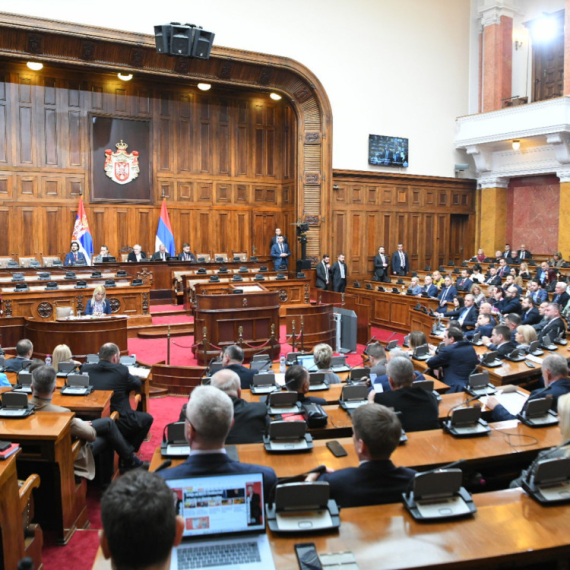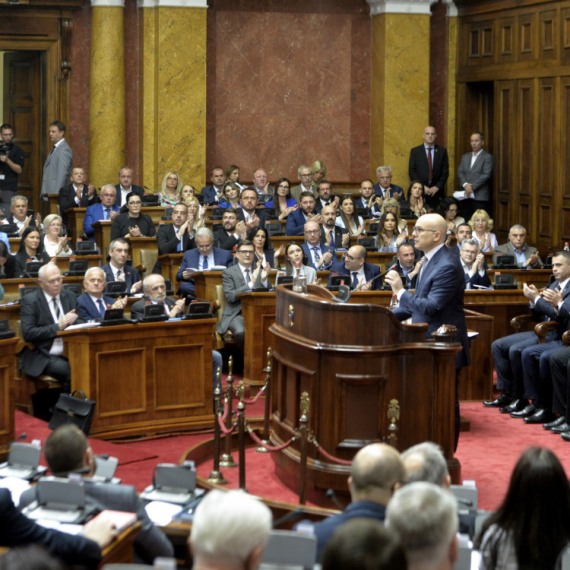Bad news is coming for the citizens of Serbia: Interest rates have surged
For many citizens with mortgage loans in Serbia, of which there are around 150,000 in total, the monthly installment is on average higher by about $100.
Thursday, 24.08.2023.
14:03

Bad news is coming for the citizens of Serbia: Interest rates have surged
And perhaps that's not the worst news. It seems that the rise in interest rates could continue for some time, along with the increase in loan installments and the rise in issues for the average citizen with a mortgage.According to data from the National Bank of Serbia, the average interest rate on housing loans in euros, which make up about 99 percent of the total number, was 2.66 percent in April of last year. A year later, in April of this year, it climbed to 6.29 percent. In May of this year, it was 6.47 percent, and in June, 6.65 percent, as confirmed by the National Bank of Serbia. And that's more than a doubled growth in just one year.
In translation, for a loan of 30,000 euros with a repayment period of 30 years, the installment has increased by around 65 euros. For a loan of 50,000 euros, the increase is 110 euros, and for 80,000 euros, a substantial 170 euros.
Example of a mortgage loan of 30,000 euros:
Amount: 30,000 euros
Repayment period: 30 years
Average interest rate last year: 2.66 percent
Installment last year: 121 euros
Average interest rate this year: 6.29 percent
Installment this year: 185.5 euros
Example of a mortgage loan of 50,000 euros:
Amount: 50,000 euros
Repayment period: 30 years
Average interest rate last year: 2.66 percent
Installment last year: 201.7 euros
Average interest rate this year: 6.29 percent
Installment this year: 309.1 euros
Example of a mortgage loan of 80,000 euros:
Amount: 80,000 euros
Repayment period: 30 years
Average interest rate last year: 2.66 percent
Installment last year: 322.7 euros
Average interest rate this year: 6.29 percent
Installment this year: 494.6 euros
According to the European Central Bank's data, the average interest rate on housing loans in the eurozone in April of this year was 3.48 percent, specifically: 4.17 percent in Italy, 3.93 percent in Germany, 3.83 percent in Austria, and 2.62 percent in France. The increase in these countries has been significant, believed to be due to a higher prevalence of fixed-rate loans. This means a smaller number of housing loans have been subject to changes in interest rates compared to Serbia, where as much as 99 percent of housing loans have variable interest rates.
Although there have been no delays in loan repayment according to statistics, there is concern. The Euribor has been consistently rising for a year and a half. It's now around 4 percent, whereas not long ago, it was even negative. Translated into concrete examples for the citizens of Serbia, their installments have increased by an average of around 100 euros in just a year. The actual amount naturally depends on the repayment period, interest rates, loan maturity... so for many, the increase has been even more than 100 euros.
Loan repayment is still regular, but how long it will remain so - we don't know.
As recently stated by Branko Živanović, a professor at the Belgrade Banking Academy, loan repayments by both businesses and individuals have been regular throughout this year.
"Of course, delays will occur and are already happening, as commercial bank interest rates rise, primarily due to the increase in the reference interest rates of central banks. The ECB, which directly influences the rise of Euribor, also influences our reference or key interest rate at the NBS. Besides the fact that it complicates the repayment of loans indexed in foreign currencies, which is the majority, it consequently affects Belibor, i.e., interest rates on dinar loans, and increasingly complicates the overall loan repayment in our country. Loan repayment has been within tolerable limits so far, and let's hope it stays that way until the end of the year," explains Živanović.
He says that it's difficult to predict the level of the interest rate that businesses and individuals won't be able to cover at this moment, but the fact is that we're not far from it.
Should you take a loan now and what kind?
Those who are currently looking to resolve their housing situation are faced with a major dilemma: should I even take out a loan for a home, and if I do, is there a way to save somehow?
The answer to this question isn't straightforward. Banks have reintroduced combined interest rates, and some even offer fixed rates, but choosing these banking products is unlikely to lead to savings. Combined rates by nature always move in line with variable rates, and fixed rates, if they are available, in these conditions entail a far higher cost than the variable.


































Komentari 0